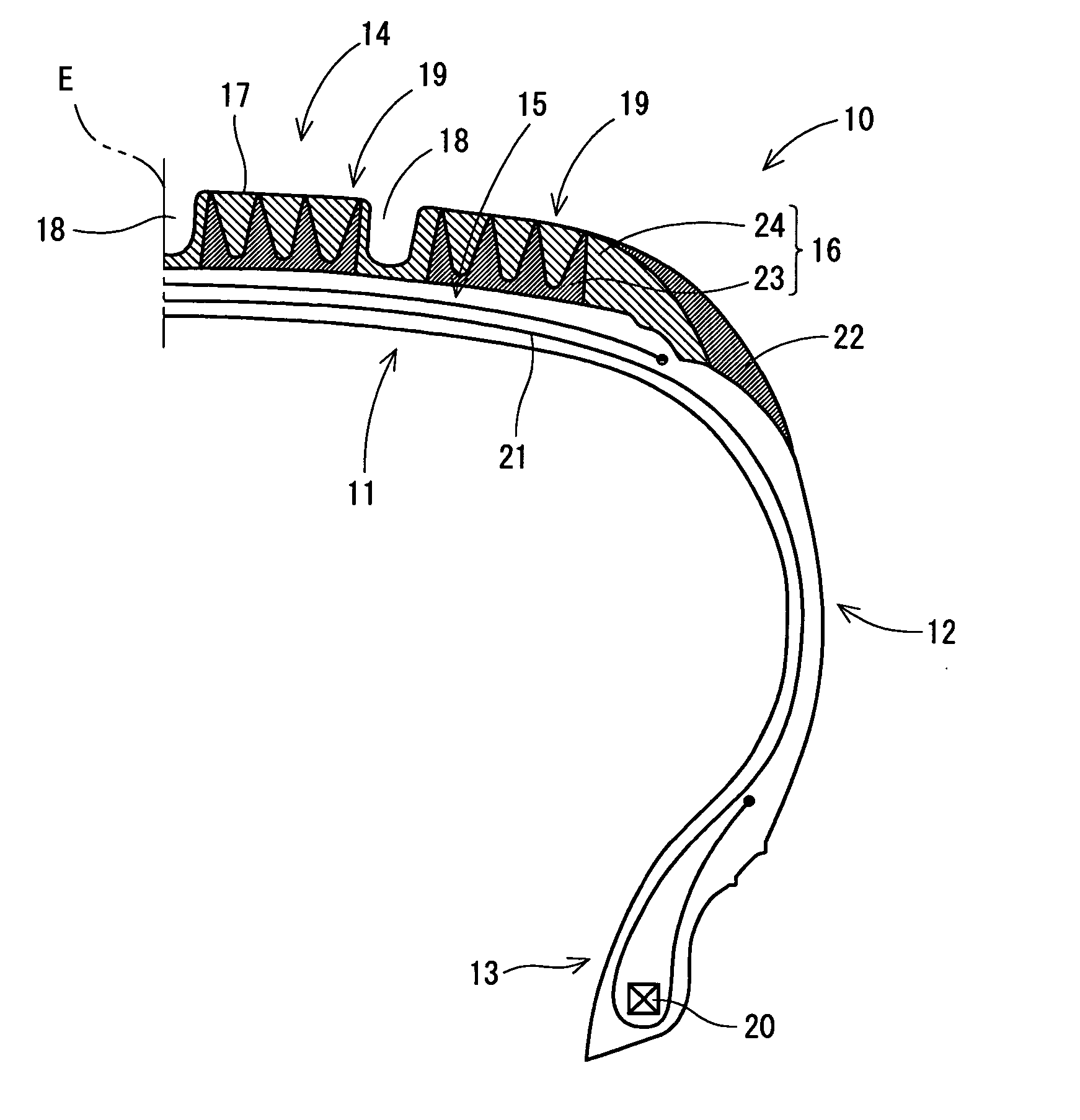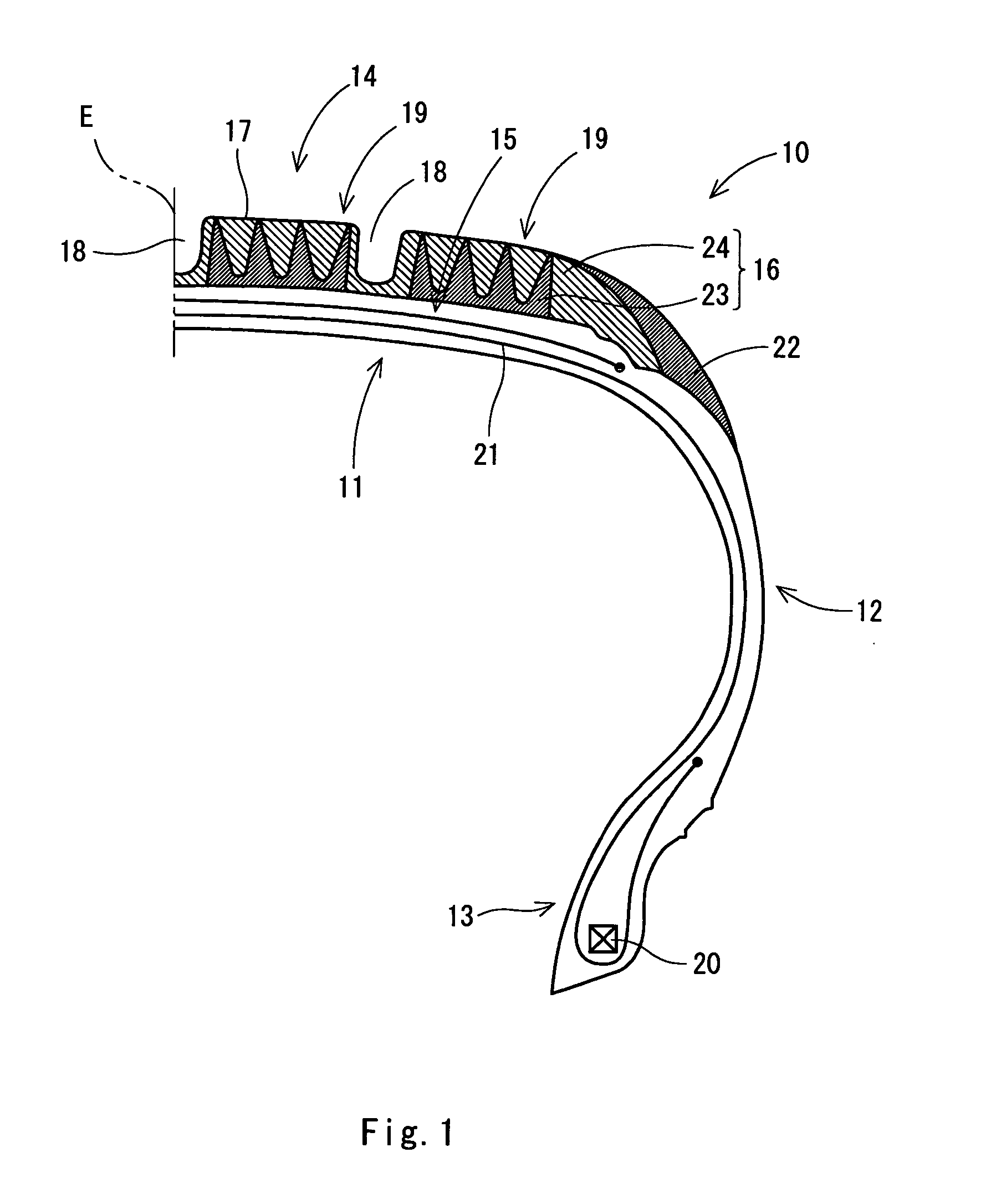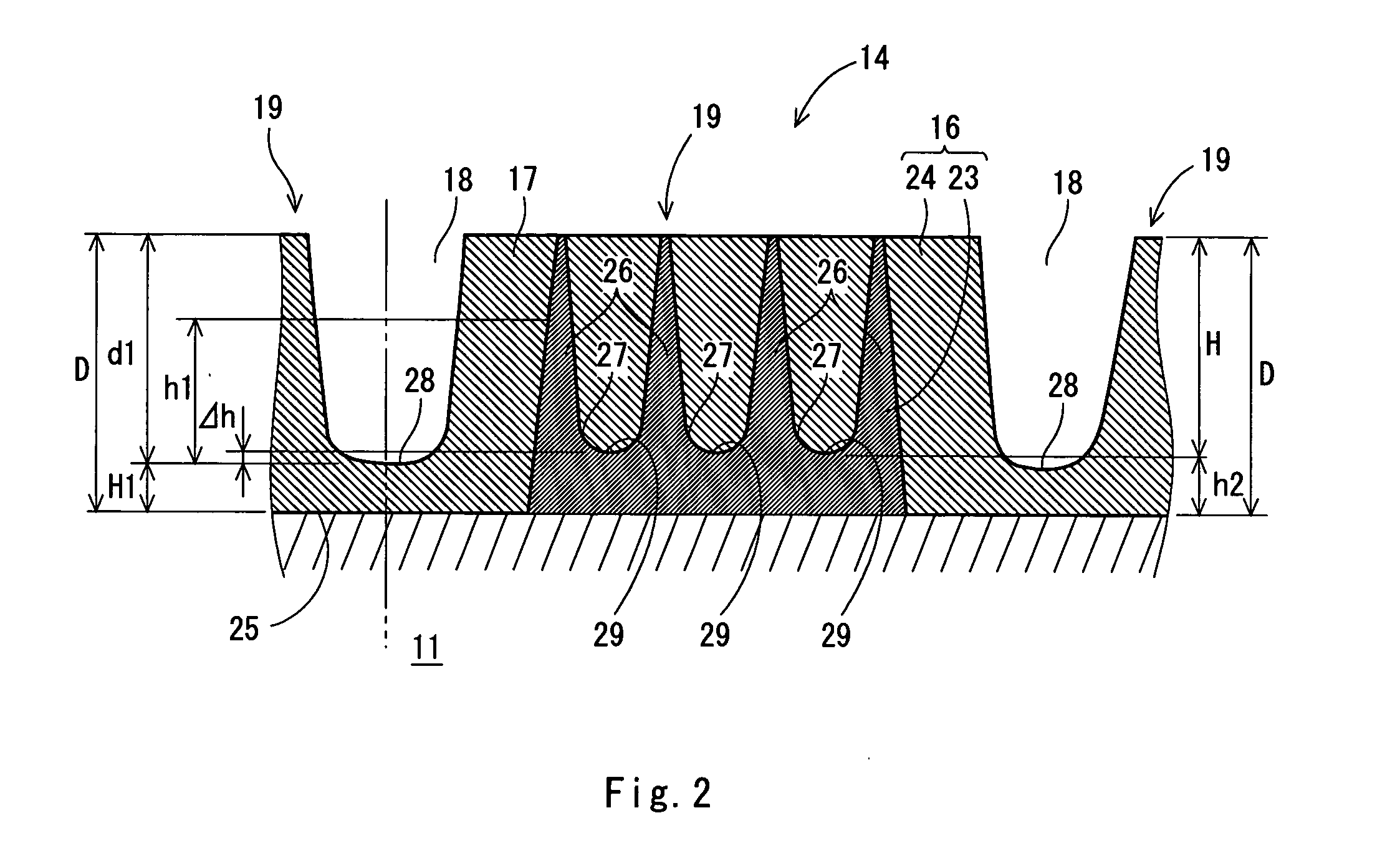Pneumatic tire
a technology of pneumatic tires and tyres, which is applied in the direction of special tyres, vehicle components, non-skid devices, etc., to achieve the effects of reducing rolling resistance, excellent conductiveness, and easy carrying of electricity
- Summary
- Abstract
- Description
- Claims
- Application Information
AI Technical Summary
Benefits of technology
Problems solved by technology
Method used
Image
Examples
example 1
[0046] For a cap layer, a ratio to a tread rubber layer is 80% and a rubber hardness (JIS A hardness) is 64. Moreover, the composition of a rubber constituting the cap layer is of a blend I type and a predetermined amount of silica is blended. On the other hand, for a base layer, the ratio to the tread rubber layer is 20% and the rubber hardness is 60. The number of convex portions is two and the number of the exposed convex portions to a tread surface is two. Furthermore, the composition of a rubber constituting the base layer is of a blend II type, and the silica is not blended but carbon black is blended at a relatively high rate.
example 2
[0047] For a cap layer, a ratio to a tread rubber layer is 80% and a rubber hardness (JIS A hardness) is 64. Moreover, the composition of a rubber constituting the cap layer is of a blend I type and a predetermined amount of silica is blended. On the other hand, for a base layer, the ratio to the tread rubber layer is 20% and the rubber hardness is 59. The number of convex portions is two and the number of the exposed convex portions to a tread surface is two. Furthermore, the composition of a rubber constituting the base layer is of a blend III type, and the silica is not blended but carbon black is blended at a relatively low rate.
example 3
[0048] For a cap layer, a ratio to a tread rubber layer is 80% and a rubber hardness (JIS A hardness) is 64. Moreover, the composition of a rubber constituting the cap layer is of a blend I type and a predetermined amount of silica is blended. On the other hand, for a base layer, the ratio to the tread rubber layer is 20% and the rubber hardness is 59. The number of convex portions is six and the number of the exposed convex portions to a tread surface is two. Furthermore, the composition of a rubber constituting the base layer is of a blend III type, and the silica is not blended but carbon black is blended at a relatively low rate.
PUM
 Login to View More
Login to View More Abstract
Description
Claims
Application Information
 Login to View More
Login to View More - R&D
- Intellectual Property
- Life Sciences
- Materials
- Tech Scout
- Unparalleled Data Quality
- Higher Quality Content
- 60% Fewer Hallucinations
Browse by: Latest US Patents, China's latest patents, Technical Efficacy Thesaurus, Application Domain, Technology Topic, Popular Technical Reports.
© 2025 PatSnap. All rights reserved.Legal|Privacy policy|Modern Slavery Act Transparency Statement|Sitemap|About US| Contact US: help@patsnap.com



